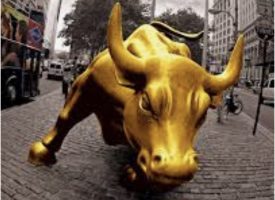We have seen three major shocks since 1992: 9/11, Great Financial Crisis and COVID-19.
October 29 (King World News) – Danielle DiMartino Booth at Quill Intelligence: As one of the original members of the “Not Ready for Prime Time Players” on Saturday Night Live from 1975 to 1979, Dan Akyroyd is anything but. His big-screen Hollywood career spans six decades and gives new meaning to diversity in roles. Elwood Blues in 1980’s The Blues Brothers could not be more far removed from the character of Ray Stantz in 1984’s Ghostbusters. In 1990, he even was nominated for the Academy Award for Best Supporting Actor for his serious acting work in 1989’s Driving Miss Daisy. But QI’s quirky favorite pits a middle-aged Akyroyd hitman (Grocer) against John Cusack’s lead (Martin Q. Blank) in the 1997 dark comedy Grosse Point Blank. You can thank us after you stream it on your next Friday movie night.
The occasion of some dusty data on Wednesday prompted us to do something to which we are unaccustomed – focus on the gross, as opposed to the net. The figures that inspired the shift in perspective come from the Bureau of Labor Statistics’ (BLS) Business Employment Dynamics (BED) report. What distinguishes the BED data from that of the bellwether nonfarm payrolls, from the same BLS source, is the sample size – BED is for BIG…
To learn about one of the most exciting silver plays in
the world click here or on the image below

BED compiles gross job gains and gross job losses derived from the histories of 8.3 million private-sector employer reports out of a total 10.4 million submitted by states to the BLS. The payrolls data are compiled from an establishment survey of about 145,000 businesses and government agencies, representing approximately 697,000 individual worksites; the active sample includes approximately one-third of all nonfarm payroll jobs.
By way of background, BED data spawn from “the employment source” known as the Quarterly Census of Employment and Wages (QCEW). Most employers in the U.S. are required to file quarterly reports on the employment and wages of workers covered by unemployment insurance (UI) laws and to pay quarterly UI taxes. QCEW is the most accurate labor headcount and is used to benchmark the bellwether nonfarm payroll employment once a year. The only drawback: QCEW data lag.
Against the current backdrop, this hinderance works in our favor. Consider the three largest shocks that overlap the BED history since 1992: 9/11, the Great Financial Crisis (GFC) and COVID-19. BLS’s cross section can be stratified into small companies with 1-49 employees, medium-sized firms that employ 50-499 workers and large businesses with headcounts of 500 or more. To observe the start of each shock, we isolated the quarter-over-quarter change in gross job losses normalized by the share of total employment. Our key findings:
- The fourth quarter of 2008 that helped define the GFC revealed the worst sequential total gross job losses for medium and large companies and the worst quarter on record for gross job losses at firms of all sizes that reduced their payrolls
- The first quarter of 2020 that included the start of COVID indicated the worst sequential showings for small business total gross job losses and gross job losses at firms that closed their doors.
Let that sink in for a moment. The quarter that included only one month of the Coronashock yielded the biggest impulse for small business closures ever. Imagine what 2020’s full second quarter will generate in the table above. Will re-openings salvage the third quarter? How about the fourth quarter if the COVID-19 surge eclipses those of the spring and summer? We expect a rewrite with records deposited all in the far-right column.
The idea of today’s right-hand chart should get you in the holiday spirit. The results will leave you wanting. Gallup surveyed households’ holiday spending intentions compared to the prior year. More Americans are planning to spend less this year (28%), fewer plan to spend more (12%). These tails took away from the largest part of the distribution that said “about the same” (59%). In dollar terms, the average $805 U.S. households plan to spend on holiday gift-giving is materially lower than what they foresaw last year at this time — $942 – and is the lowest since 2016. Moreover, the survey conclusion date was October 15, when stocks were flirting with their all-time highs.
To put this in context, according to the National Retail Federation, since 2000, holiday sales have risen by 3.3% on average. A strong year sees a figure closer to 5% while a weak one rings in at 2%, smack dab where this year’s estimate is. The only two years that featured such anemic growth rates were the GFC’s 2008 and 2009.
As discouraging as the outlook is for retailers in the aggregate, the COVID surge promises to push shoppers to make their reduced purchases online in the safety of their homes. More online equals fewer small business sales and in turn, a lower survival rate for small retail stores as consumers choose to click instead of “Shop Small.”
We hope you agree that we all lose when we lose small, local businesses. The sole beneficiary — truck drivers in big rigs and in delivery vans going the last mile who will be rewarded with bigger relative paychecks this holiday season. This should skew the aggregate for average weekly earnings higher at the expense of losses in the lower-paid retail space.
The COVID surge has a “contract out” for many small retailers to get taken out by a hitman this holiday season. Shipping companies and truck drivers will be the winners. Tragically, Main Street retailers will be the losers.
***To listen to Agnico Eagle CEO Sean Boyd predict $3,000 gold and the big game-changer in the gold market in his greatest interview ever CLICK HERE OR ON THE IMAGE BELOW.
© 2020 by King World News®. All Rights Reserved. This material may not be published, broadcast, rewritten, or redistributed. However, linking directly to the articles is permitted and encouraged.








